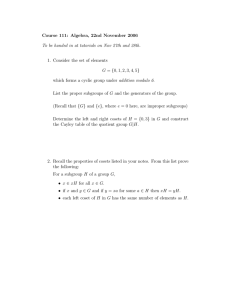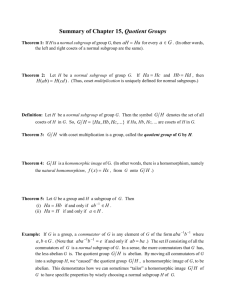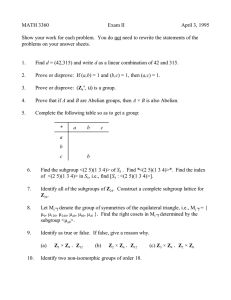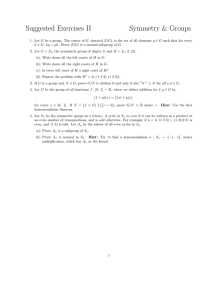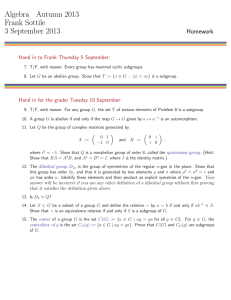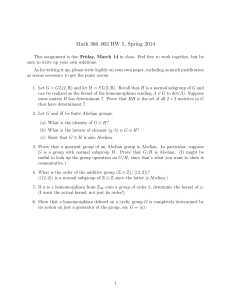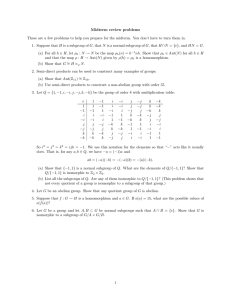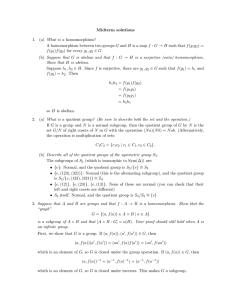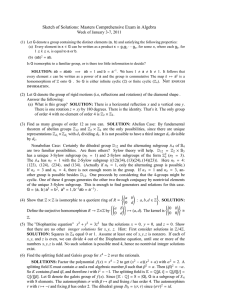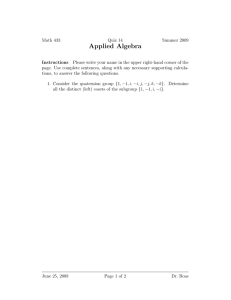A reminder of some useful group theory G H x
advertisement
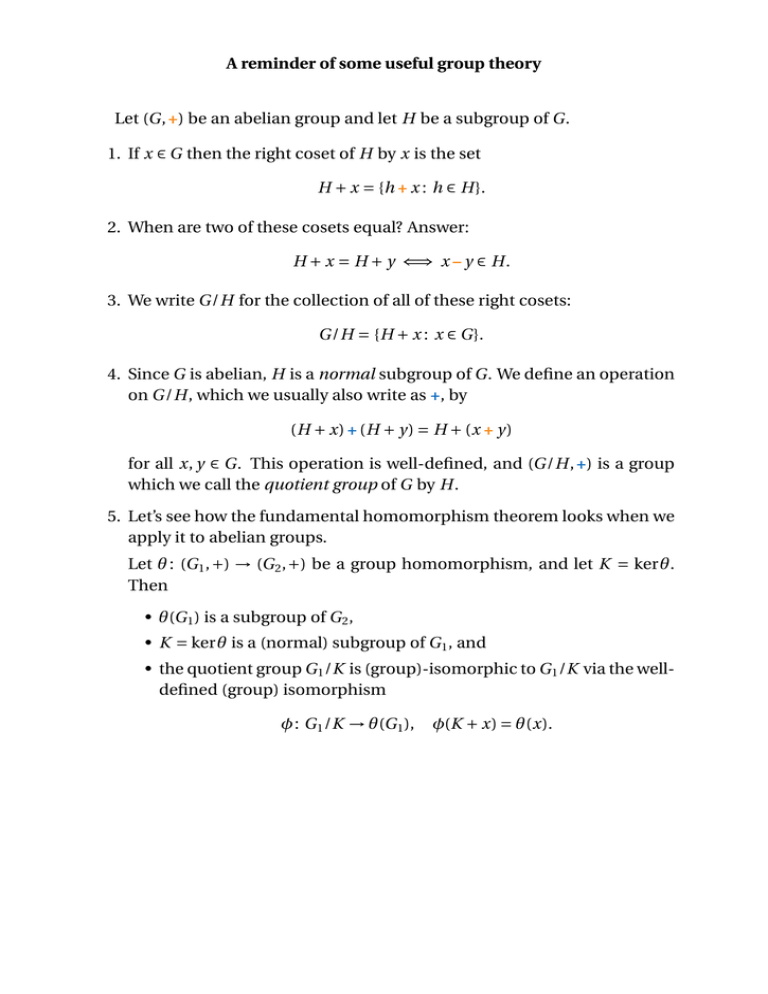
A reminder of some useful group theory
Let (G, +) be an abelian group and let H be a subgroup of G.
1. If x ∈ G then the right coset of H by x is the set
H + x = {h + x : h ∈ H }.
2. When are two of these cosets equal? Answer:
H + x = H + y ⇐⇒ x – y ∈ H .
3. We write G/H for the collection of all of these right cosets:
G/H = {H + x : x ∈ G}.
4. Since G is abelian, H is a normal subgroup of G. We define an operation
on G/H , which we usually also write as +, by
(H + x) + (H + y) = H + (x + y)
for all x, y ∈ G. This operation is well-defined, and (G/H , +) is a group
which we call the quotient group of G by H .
5. Let’s see how the fundamental homomorphism theorem looks when we
apply it to abelian groups.
Let θ : (G 1 , +) → (G 2 , +) be a group homomorphism, and let K = ker θ.
Then
• θ(G 1 ) is a subgroup of G 2 ,
• K = ker θ is a (normal) subgroup of G 1 , and
• the quotient group G 1 /K is (group)-isomorphic to G 1 /K via the welldefined (group) isomorphism
φ : G 1 /K → θ(G 1 ),
φ(K + x) = θ(x).

